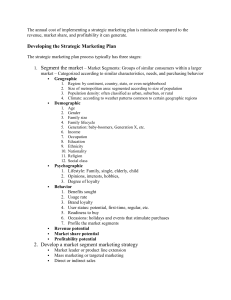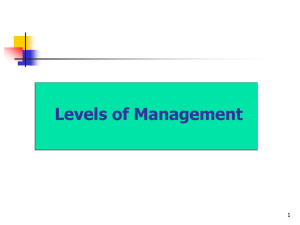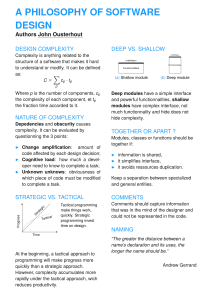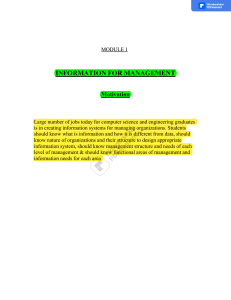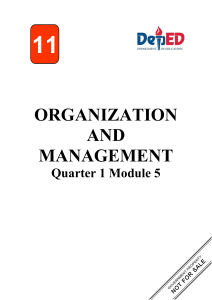Managing by Goals
advertisement
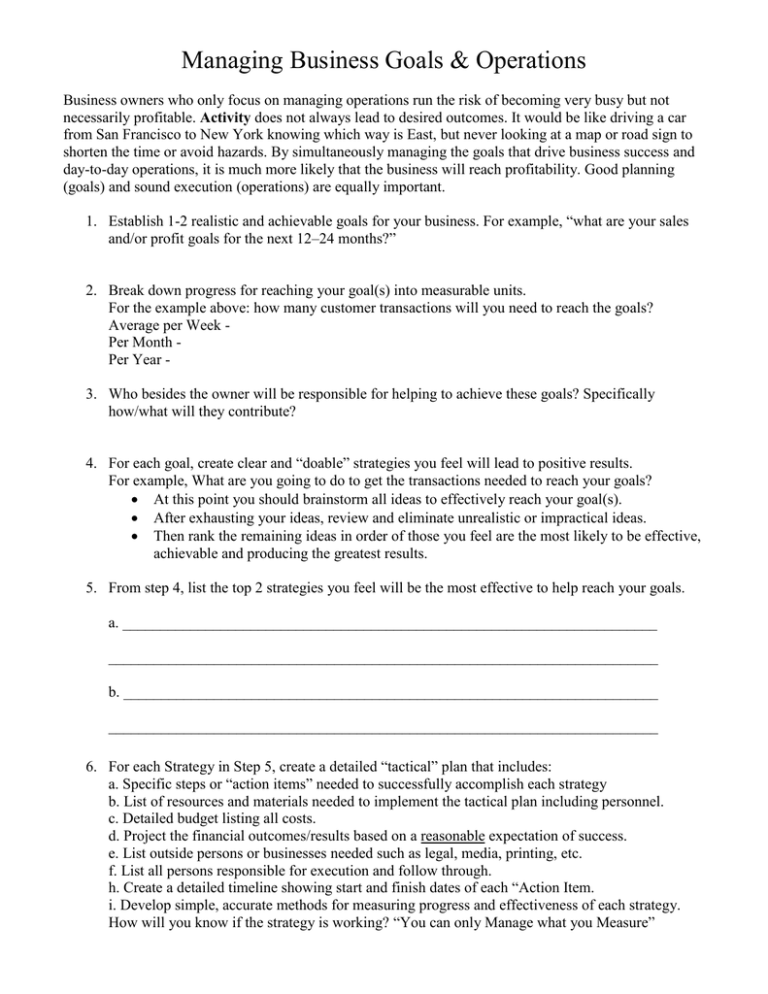
Managing Business Goals & Operations Business owners who only focus on managing operations run the risk of becoming very busy but not necessarily profitable. Activity does not always lead to desired outcomes. It would be like driving a car from San Francisco to New York knowing which way is East, but never looking at a map or road sign to shorten the time or avoid hazards. By simultaneously managing the goals that drive business success and day-to-day operations, it is much more likely that the business will reach profitability. Good planning (goals) and sound execution (operations) are equally important. 1. Establish 1-2 realistic and achievable goals for your business. For example, “what are your sales and/or profit goals for the next 12–24 months?” 2. Break down progress for reaching your goal(s) into measurable units. For the example above: how many customer transactions will you need to reach the goals? Average per Week Per Month Per Year 3. Who besides the owner will be responsible for helping to achieve these goals? Specifically how/what will they contribute? 4. For each goal, create clear and “doable” strategies you feel will lead to positive results. For example, What are you going to do to get the transactions needed to reach your goals? At this point you should brainstorm all ideas to effectively reach your goal(s). After exhausting your ideas, review and eliminate unrealistic or impractical ideas. Then rank the remaining ideas in order of those you feel are the most likely to be effective, achievable and producing the greatest results. 5. From step 4, list the top 2 strategies you feel will be the most effective to help reach your goals. a. _______________________________________________________________________ _________________________________________________________________________ b. _______________________________________________________________________ _________________________________________________________________________ 6. For each Strategy in Step 5, create a detailed “tactical” plan that includes: a. Specific steps or “action items” needed to successfully accomplish each strategy b. List of resources and materials needed to implement the tactical plan including personnel. c. Detailed budget listing all costs. d. Project the financial outcomes/results based on a reasonable expectation of success. e. List outside persons or businesses needed such as legal, media, printing, etc. f. List all persons responsible for execution and follow through. h. Create a detailed timeline showing start and finish dates of each “Action Item. i. Develop simple, accurate methods for measuring progress and effectiveness of each strategy. How will you know if the strategy is working? “You can only Manage what you Measure”


